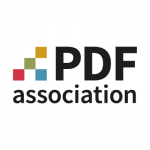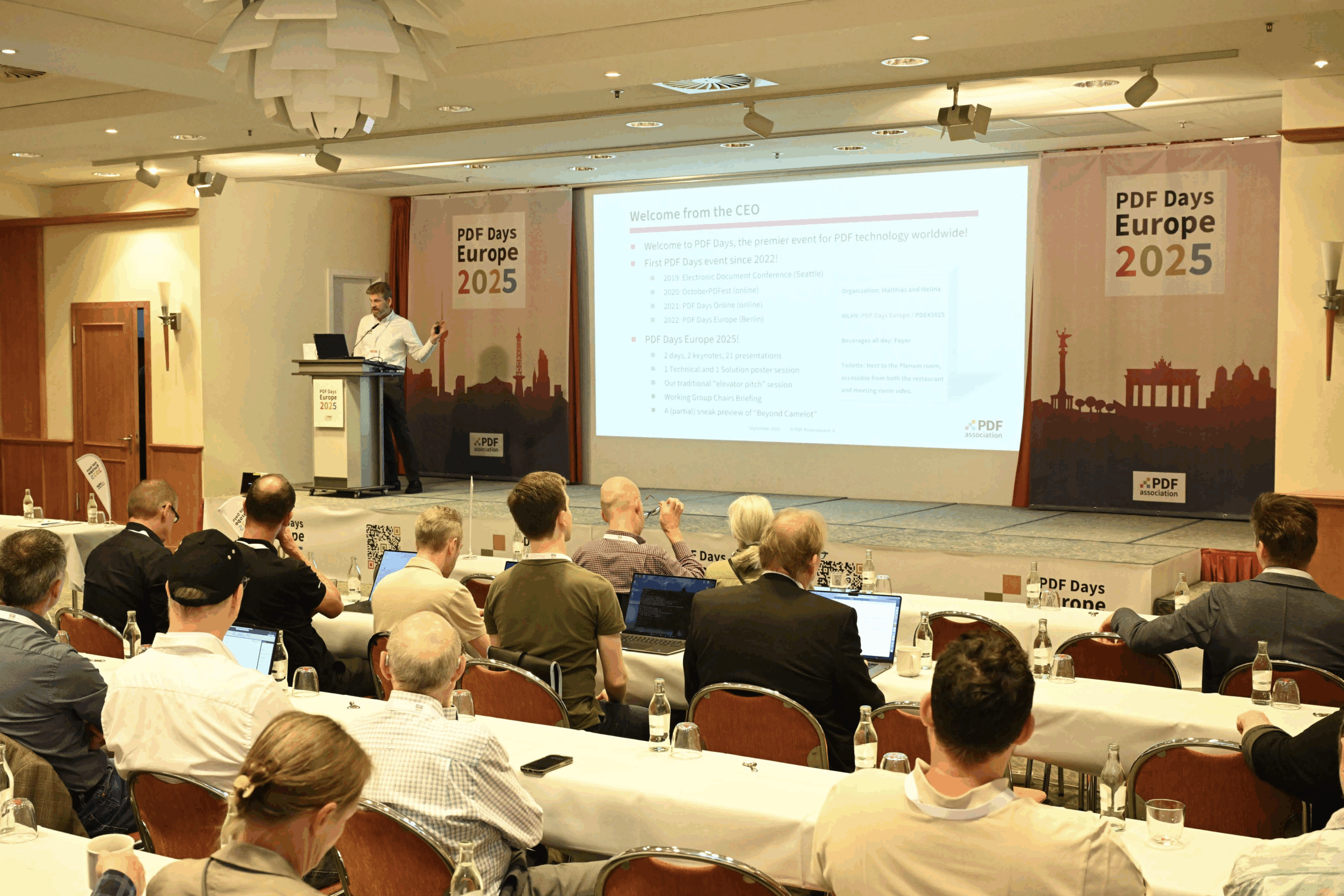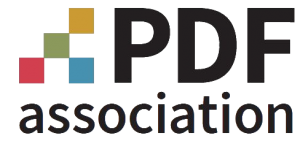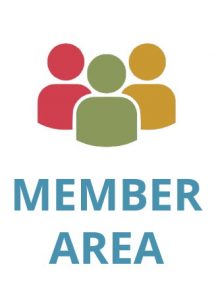Recordings of PDF Days Europe 2025 available now!

The PDF Association staff delivers a vendor-neutral platform in service of PDF’s stakeholders.


It is time! The recordings of all presentations held at PDF Days Europe 2025 are finally available.
To find them, start at the event’s agenda, the presentation archive or have a look at our YouTube-Playlist! Here is a (very!) short summary of the presentations.
PDF Days Europe 2025 kicked off with a keynote by Professor Dr. Phillipp Hacker on “The role of AI in rapidly reshaping content creation, management, and authenticity” which framed the stakes for documents in an AI-infused world in which efficiency, provenance, and trust are dominant themes.
The challenge of harnessing AI without sacrificing reliability echoed across presentation tracks and hallway conversations, anchoring discussions about metadata, signatures, verification, and the responsibilities of toolmakers and content owners.
"PDF 2030” encouraged the crowd to ask how platform shifts, user expectations, and emerging standards should shape priorities. “Modern invisible ink – Understanding hidden information in PDF” drilled into the realities of content that users don’t see but that downstream systems must handle correctly; the “hidden” structures that can both empower workflows and (if mishandled) introduce risk. Meanwhile, “Tagged PDF in the Wild” introduced practical evidence from real-world documents about trends in the use of PDF’s reuse and accessibility mechanisms.
“Collaborative PDF” explored how the future, with richer co-authoring, annotation, and review models could work within durable, interoperable PDF workflows. “PDF Forensics and the Metadata conundrum” surfaced the double-edged sword of descriptive data – vital for discovery and compliance, but also a source of privacy and governance challenges. “Understanding the structure of PDF tables and extracting data from them” addressed one of the field’s most persistent demands: obtaining reliable, semantically meaningful tabular data from heterogeneous documents.
Security and authenticity were recurring themes of the event. “Document security and authenticity” unpacked threat models and trust chains in a world where documents are ingested by both people and machines, while “HTML and PDF, best of Frenemies” made the case for practical coexistence – leveraging each medium’s strengths rather than forcing false choices. “Beyond Automation” advocated approaches to accessibility that meet users where they are. Taken together, this cluster of talks highlighted a sober truth: “smart” pipelines only matter if their outputs are robust, perceivable, and verifiable by humans and systems alike.
Day 2 focused on accessibility and production realities. Alexander Pfingstl’s “Accessible Digital Documents” keynote opened the morning. “Working with Techniques for accessible PDF” connected the dots between standards guidance and in-the-trenches authoring/remediation practice, while “When PDF is production critical” addressed scale and reliability in enterprise print workflows and “Making it easier to design” highlighted the gaps between design tools and printing systems. “In Defense of the Incremental Save” reminded everyone of the value of this long-standing feature of PDF.
Inevitably, AI returned to the stage with “Empowering the Future of PDF with AI” and “PDF, AI, and Data Protection: Can Smart Be Safe?”, both emphasizing privacy-preserving design and clear lines between generative convenience and verifiable truth. “AI and PDF Accessibility” focused on the potential of AI to help ensure inclusive, accessible documents. “Tagged and Accessible PDF with LaTeX — revisited” spotlighted the steady progress in STEM publishing, where MathML-aware, semantically rich outputs are increasingly required. “PDF XMP Metadata Validation” presented an open-source solution for XMP validation in PDFs conforming to multiple PDF subset standards. “Breaking Good” and “PDF Between the Lines: Specification, De Facto Standards, and the Coming UX Shift” invited attendees to look past formal texts to the lived reality of interoperability and user expectations, ensuring that specs, implementations, and UX evolve together.
“PDF Association Membership Benefits 101” outlined how PDF Association membership offers access to standards-in-development, expert collaboration, and marketing opportunities through increased visibility and networking.




